‘There are always ideas passing by. You need to grab them’: AMDL CIRCLE x Mara
Historia de la marca de Simon Keane-Cowell
Passirano Brescia, Italia
10.04.24
AMDL CIRCLE, the studio founded by the design legend Michele De Lucchi, has harnessed the innovative spirit and craftsmanship of Italian furniture manufacturer Mara to produce TYPO – a typology-shifting chair that celebrates serendipity.
Driven by a forward-thinking spirit, AMDL CIRCLE, the team of Michele De Lucchi, has partnered with Mara to design a new chair, TYPO
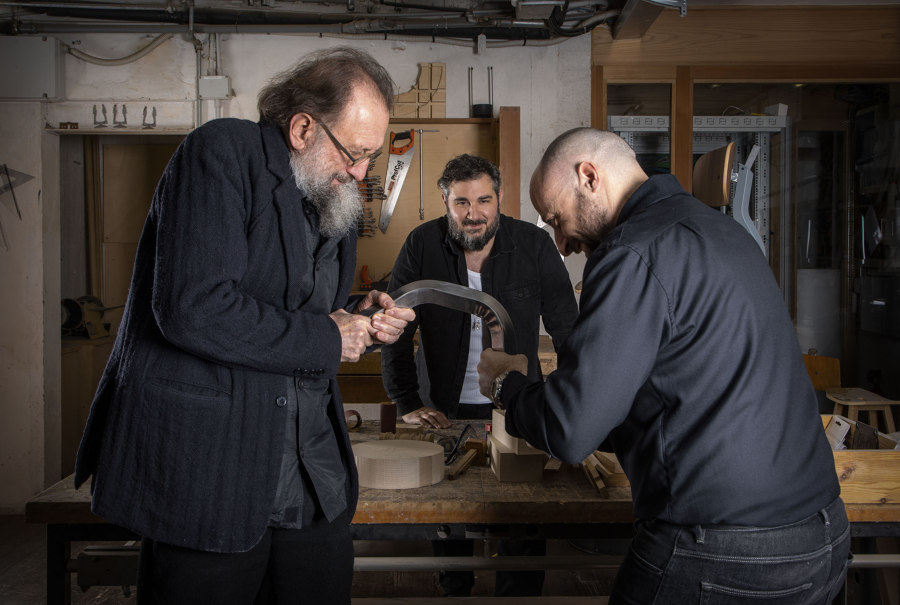
Driven by a forward-thinking spirit, AMDL CIRCLE, the team of Michele De Lucchi, has partnered with Mara to design a new chair, TYPO
×Anyone who knows me knows that I love to ask questions. Probably too many.
But when you meet with Italian architecture and design grandee Michele De Lucchi, you’re all ears, such is the calibre of this thought and the eloquence of its expression, built on the back of over half a century of experimental, and sometimes iconoclastic, creative practice. From his participation in such avant-garde design collectives as Studio Alchimia and Memphis to his authorship of the Compasso d’Oro-winning Tolomeo lamp and Pulcina coffee pot, he’s seen a lot and done a lot.
The fact that De Lucchi’s commentary comes with such experience-backed heft meant that I had the singular pleasure, in a recent call with the man, of listening more than interrogating. (When I suggested that many might consider him an elder statesman of design, he, as if on cue, stroked his long grey beard. There’s nothing wrong with a bit of performance in my book.)
As its name suggests, TYPO plays with the idea of the chance mistake, the happy incident
Propelled by its mission to investigate and develop design ideas and solutions for well-being and sustainability, his Milan-based office AMDL CIRCLE’s latest collaboration has seen it design a new chair for rising-star furniture producer Mara. Appositely named TYPO, it plays with the idea of the chance mistake, the happy accident, its steel-profile back bent in such an innovative way as to create a series of deep creases. Turning the controlled mishap (‘Folds in design are never really desired,’ says De Lucchi) into a virtue, you’re left with the impression that this is at once a material that’s super-robust and somehow soft and fleshy.
AMDL CIRCLE and Mara's collaboration embraced experimentation. It's all about pushing boundaries rather than producing millions of pieces in one go
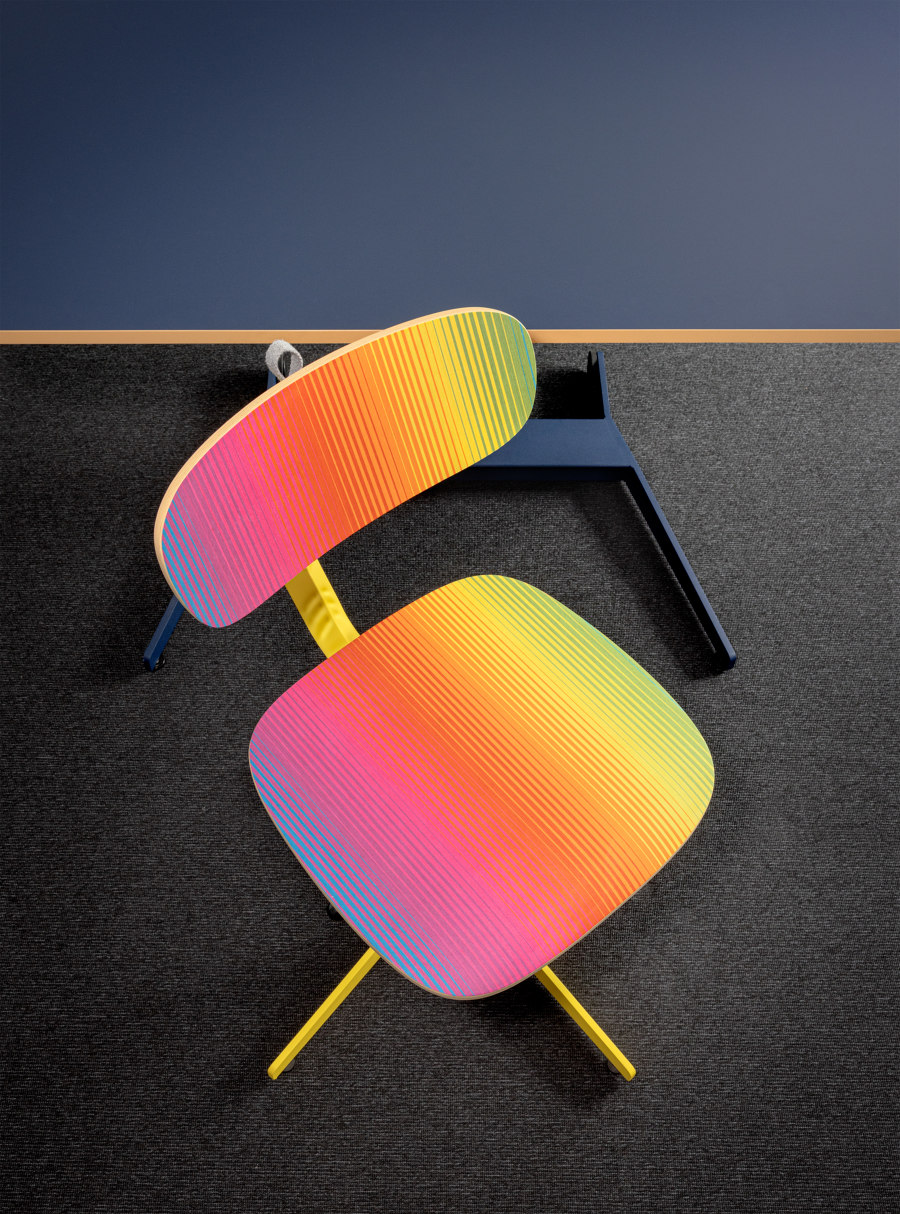
AMDL CIRCLE and Mara's collaboration embraced experimentation. It's all about pushing boundaries rather than producing millions of pieces in one go
×Read on for my conversation with De Lucchi and his colleague Davide Angeli, deputy managing director at AMDL CIRCLE, about taking the experimental road less travelled, the particularity of this to Italian design culture, and how tofu isn’t to everyone’s taste.
How did the collaboration with Mara come about?
Davide Angeli: Well, we had the chance to meet and visit their place, and discovered this factory which was very active, very driven by a desire to grow, to get further into the market on their own. We found out that, unlike a lot of companies, they still manufacture almost everything themselves. They prototype, then try something else, then try to evolve that further.
We were really fascinated by the fact that they use an industrial process, but there’s still some kind of craftsmanship type of mentality. With craftsmanship, you can make mistakes. You can try something just once. It’s not about producing millions of pieces in one shot. At Mara, they make trials, they experiment.
Using innovative bending techniques, TYPO's steel profile is intricately molded to form a sequence of deep creases
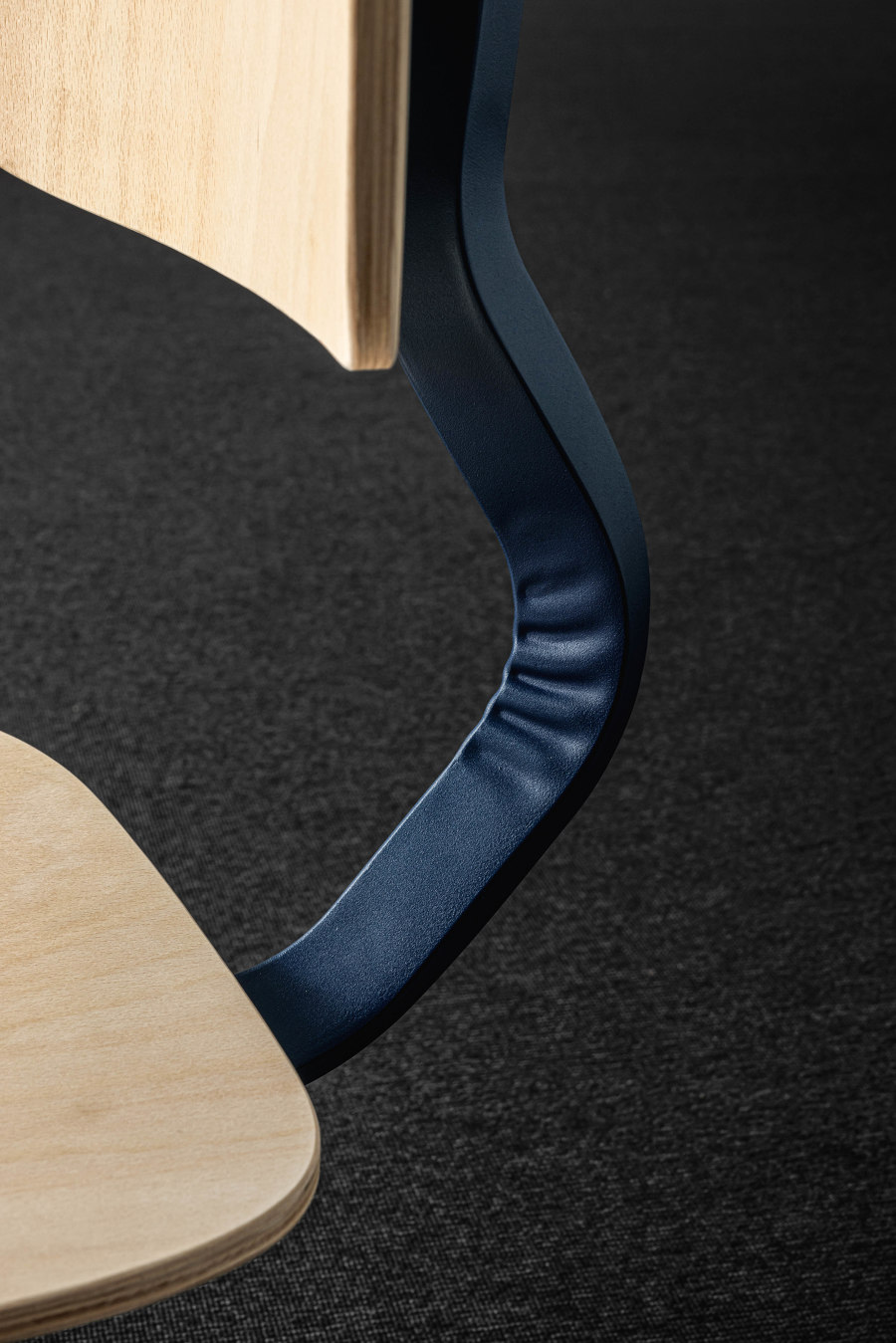
Using innovative bending techniques, TYPO's steel profile is intricately molded to form a sequence of deep creases
×Tell me about the design and development process.
DA: Most of the products Mara make use square metal profiles. They cut them, they join them, et cetera. So, we asked ‘Why don’t you try to fold this profile the other way around, on the edge, on the corner side, rather than on the flat one?’ Their reaction was initially ‘Oh, no.’ But then they tried it out with at least a hundred different pieces, some of which we’ve kept as sculptures here in our office. Mara tried putting different materials inside before folding, like Teflon, and so on.
Michele De Lucchi: Normally you fight against a distortion of a material when you fold it. You try to obtain a result that is as perfect as possible. But when you fold on the edge of a metal profile, you stress the metal and end up with some deep folds. Like when you bend your wrist.
DA: And this for us was so fascinating. Working deeply in the manufacturing process, transforming something so banal, if you like, that they have been using for over 50 years.
The material gives the impression that it's super-robust, yet possesses a soft, almost flesh-like quality
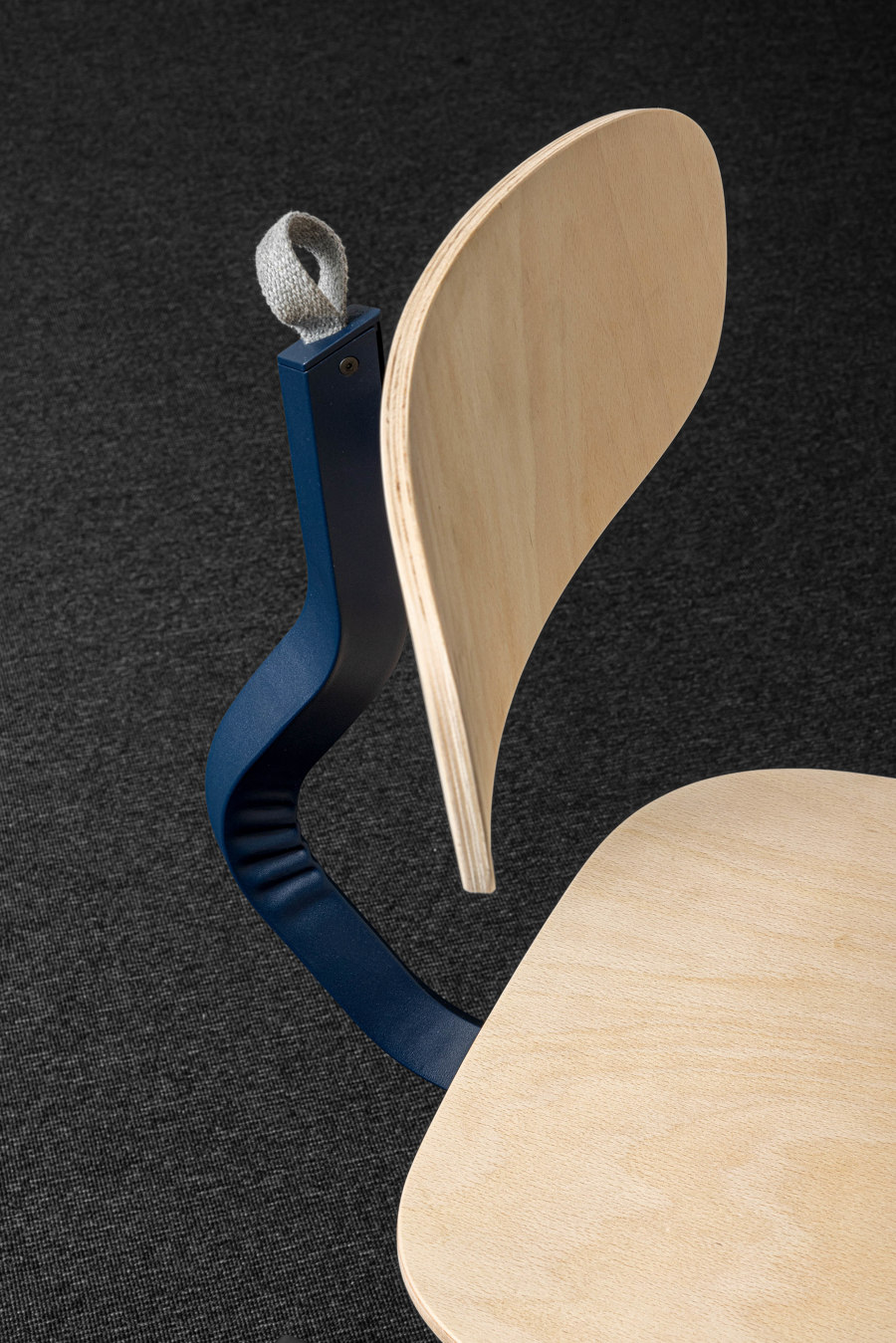
The material gives the impression that it's super-robust, yet possesses a soft, almost flesh-like quality
×MDL: This is very particular to Italian design, Italian manufacturing, Italian craftsmanship. The situation Davide just described doesn’t happen in other countries. Neither in Germany, France, nor Spain. This love for making directly by hand, to experiment with your hands and not only in a theoretical way. This is very Italian and makes Italian design so innovative, so experimental, and even so successful around the world.
This was like a serendipitous moment. All the time in design, we want to create something new, something spectacular, something that’s shocking, but in a positive way. Folds in design are never really desired. Nobody wants folds, especially not in your body. (Laughs.)
Unless they are extremely sharp and graphic. Think of Issey Miyake who made a career out of folds, taking the practice of origami and applying it to textiles.
MDL: Well, Issey’s friendship was very inspiring for us. A few weeks ago, I found a picture of Davide and me together with Issey Miyake. The last time we met him, he wanted to bring us to a tofu restaurant. I hate tofu. But I wanted to be as polite as possible and show that I love tofu so much. (Laughs.)
DA: And it was 15 courses. Only tofu.
TYPO embodies the best of Italian design, reflecting a passion for manual craftsmanship and hands-on experimentation
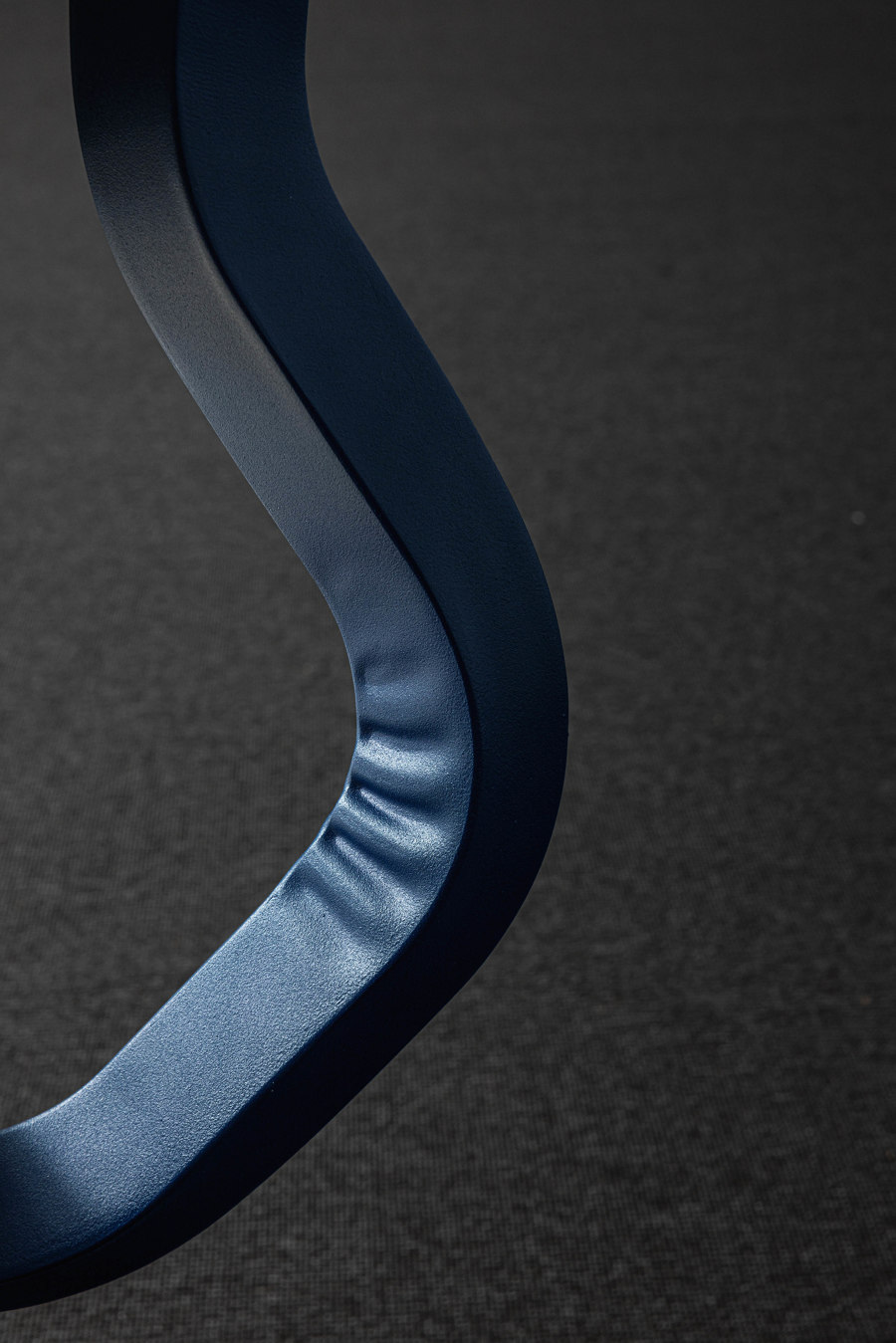
TYPO embodies the best of Italian design, reflecting a passion for manual craftsmanship and hands-on experimentation
×What I think is particularly striking about your new TYPO chair is the contradiction, the tension, between its materiality, a robust, super-hard metal, and its formal expression. Those folds are like flesh, with all its optical softness.
DA: Thank you. We tried to combine this new logic with the idea of an archetype of a chair. Like the ones we all as older architects started out with back in the day. A draughtsman’s chair, if you will. This typology is very common in everyone’s mind. We wanted something that wasn’t a high-end object but something that’s simple and accessible. We softened the wood [for the seat and backrest], tried to use wood that is very particular and special.
MDL: I think this is an example of what we always try to tell design students. To be awake to what’s passing in front of you. You just need to grasp the best ideas. There are always ideas passing by. You need to grab them at that very moment. This is a message for the whole design community. Because it often seems impossible to create something new. There are so many chairs. So much of everything that we ask ourselves, ‘Why?’ But, in fact, there is so much to do. Design can contribute so much. Especially in the direction of sustainability.
Visit Mara at this year’s Salone del Mobile!
Salone del Mobile.Milano
16-21 April 2024
Hall 18 Stand C15
© Architonic
Head to the Architonic Magazine for more insights on the latest products, trends and practices in architecture and design.







